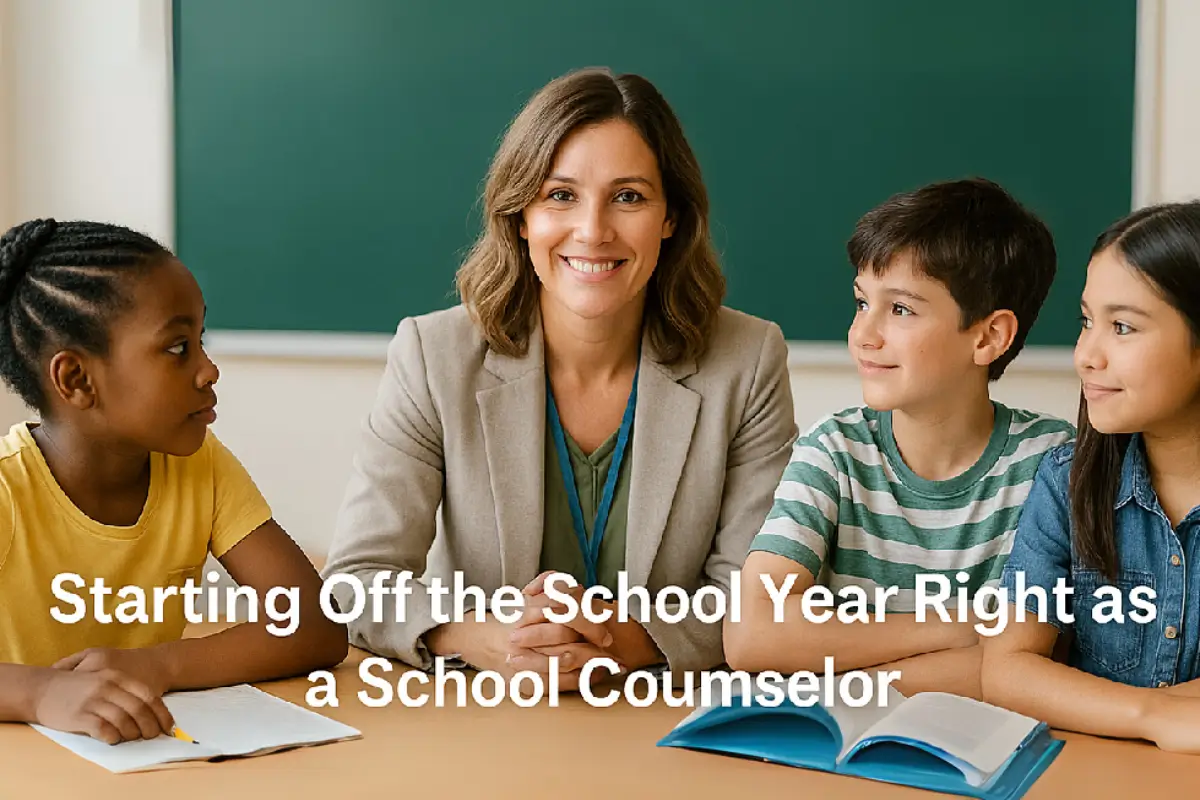Starting the School Year Strong

As the new school year begins, school counselors step into one of the most essential and influential roles in the education system—helping students feel safe, supported, and seen. From guiding academic growth in children to championing mental health education in schools, the work of school counselors is more vital than ever.
Whether you’re stepping into a new position or returning with experience, here’s a practical guide to start the year grounded, energized, and focused on what matters most.
1. Set Clear Goals with Intention
Before students walk through the door, take time to reflect and plan:
- What are your Social Emotional Learning (SEL) goals for this year?
- How will you support academic growth in children, especially those who struggled last year?
- What strategies will you use to promote mental health education in schools?
Consider setting goals across three tiers: academic, behavioral, and social-emotional. A strategic focus allows you to stay on mission and demonstrate the value of your work throughout the year.
2. Build Visibility and Connection
Your presence is your power. At the start of the year:
- Introduce yourself in classrooms and staff meetings
- Greet students during arrival, lunch, and transitions
- Share a “Meet Your School Counselor” flyer with families and staff
- Start classroom SEL lessons early to build familiarity and trust
Being visible helps position you not just as a crisis manager—but as a trusted, proactive support system.
3. Center Mental Health & Social Emotional Learning
Now more than ever, students need spaces to develop emotional intelligence, resilience, and coping skills. Make Social Emotional Learning a cornerstone of your school counseling program:
- Teach classroom lessons on self-awareness, friendship, managing emotions, and decision-making
- Facilitate small groups for anxiety, grief, social skills, or conflict resolution
- Collaborate with teachers to weave SEL into daily routines
- Advocate for a schoolwide focus on mental health education in schools
Your SEL programming doesn’t just support students emotionally—it lays the groundwork for academic readiness.
4. Organize for Academic & Emotional Success
When your systems are in place, you can support others more effectively. Early in the year:
- Prepare student request forms and referral processes
- Map out your calendar with classroom lessons, parent meetings, and groups
- Create a welcoming office space with calming visuals, SEL tools, and resources
- Identify students who may need early interventions—academically or emotionally
Your organization, behind the scenes, ensures you’re ready to lead from the heart and the head.
5. Partner with Staff & Families
You can’t do it all alone—and you don’t have to. Early collaboration fosters shared ownership of student success:
- Ask teachers what social or academic concerns they’re seeing
- Offer strategies that support both mental health and academic growth in children
- Share SEL strategies at staff meetings
- Send a newsletter or video introduction home to families explaining how the school counselor supports student well-being
These partnerships strengthen the culture of support across your campus.
6. Protect Your Own Peace
School counselors are often the emotional anchors for others. To stay balanced:
- Set boundaries around availability (it’s okay to say “not right now”)
- Schedule moments of reflection, quiet, or nature during your day
- Seek out a counselor peer group for encouragement and collaboration
- Reconnect with your “why”—the purpose behind your work
Your well-being fuels your ability to care for others. You matter, too.
Final Thoughts
As a school counselor, you are shaping futures, changing lives, and creating safer, more emotionally intelligent schools. The beginning of the year is a beautiful opportunity to set the tone for a campus that values connection, growth, and resilience.
Whether you’re teaching a calming strategy to a kindergartener or helping a senior plan for college, your impact is felt every day.
Here’s to a strong start, rooted in Social Emotional Learning, academic growth, and a commitment to mental health education in schools.
You’ve got this.




